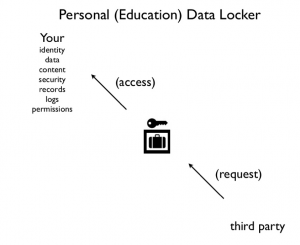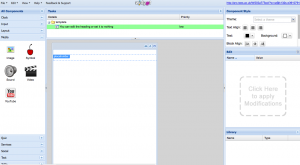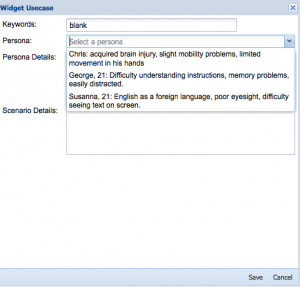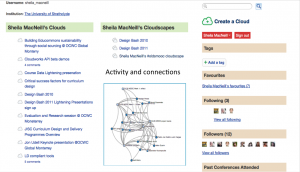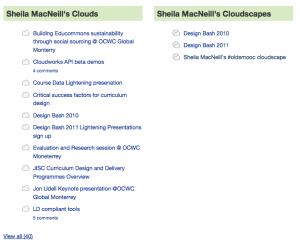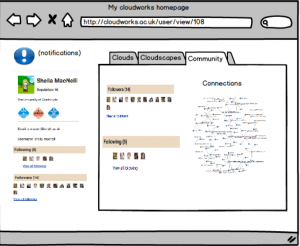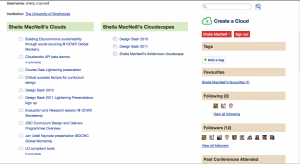Stage two of my “adventures in MOOC-land” started this week as the e-Learning and Digital Cultures course started this week. I have signed up for Coursera courses before but for various reasons, I haven’t got very far. However I have a lot more motivation for sticking with this course. For the past couple of years I have toyed with applying for the Masters in Digital Education at Edinburgh so this seems like a good way to get a taster for that course, and also a change to “compare and contrast” what is now being referred to by the Mooc-gnoscenti as a “x-MOOC” (the US big ones!), and the #oldsmooc which is more in the “c-MOOC”(connected/community) or even the p-mooc (project) camp.
Despite the massive number of participants, I’ve actually found #edcmooc a relative oasis of calm and tranquility. Mind you I haven’t explored far in the google and facebook groups/forums. Certainly the design of the course is much more traditional and individually focussed than #oldsmooc. The main content (so far videos and suggested texts which I’ve started to curate here is in the Coursera VLE. There are the usual additional online spaces of a wiki, twitter, Facebook and google groups. #edcmooc is also running alongside the Msc module and the staff are very upfront about their involvement in the MOOC:
“We will be commenting on course organisational issues, and other matters which get voted up in the forums. We won’t be present everywhere, rather we perceive the various discussion spaces as opportunities for you to explore ideas and share interests with each other.”
So unlike #oldsmooc, with that upfront statement some of my strategies for successful MOOC-ing might not work 
The final assessment is the creation of a digital artefact which will be peer assessed. Contributing to online discussions is encouraged but not mandatory. There has been a huge amount of blogging activity already and in terms of openness it is great to see that the collated #edcmooc tagged blogs are openly available.
The first block of the course centres on utopian and dystopian perspectives of digital culture and digital education and how these views impact our own practices as learners, students and teachers. Week one has looked to the past in terms of highlighting both sides of the fence. Currently MOOCs themselves are one of the best examples I can think of in relation to utopian and dystopian visions for education and technology.
I’ve collated some of the responses to this tweet in this storify.
Every week in the mainstream, technology and education press there is at least one post claiming that the education system is broken and more often than not MOOCs are being heralded as the “thing” to save the system. Particularly as Coursera, Udacity etc have been able to raise vast sums of capital, and enroll hundreds and thousands of students, which can only be a good thing, right? Looking to the past isn’t this massive engagement (on a global scale) what we need to do to address the education imbalance?
“The major problem in education today is that hundreds of millions of the world’s citizens do not receive it” (Daniel, 2002)
But are MOOCs really a stable and sustainable way of addressing this? There are are various flavours of “openness” in MOOCs. Increasingly as the business side of thing kicks in and investors want to see ROI charges are being brought in for the bit that really counts – assessment. Will as many people who signed up for the courses this year be able and willing to pay in subsequent years? If they don’t what then? I have yet to see any MOOC business model that isn’t predicated on paying for assessment – so where’s the change to the system there? When can/ will MOOCs break even?
In the UK we are still waiting to see exactly what FutureLearn (the OU UK driven MOOC platform) will offer. I’ve seen mentions of it “exciting” “learner focused” etc, but what will that look like? Do we really need another “platform” ? What will distinguish it from other VLEs? I can’t really see why any university needs to sign up to a mooc platform – they already have what they need in their VLE, and other technologies that are out there. Perhaps it more a case of having to be seen to be “playing the game” or being “in with the in-crowd”. Past experience should tell us that isn’t always the best place to be. Tony Hirst wrote a really insightful post on the possible development opportunities for FutureLearn early this week, and I noticed another one last night which brings in some more thinking and links to other possible models. I suspect tho’ the real reason is the dystopian vendor/commercial lock down one. Recognise this?
. . .the lines have already been drawn in the struggle which will ultimately determine its shape. On the one side university administrators and their myriad commercial partners, on the other those who constitute the core relation of education: students and teachers. . . It is no accident, then, that the high–tech transformation of higher education is being initiated and implemented from the top down. (Noble, 1998)
It’s actually about the early days of WebCT but could quit equally be used in the MOOC context. Plus ça change, plus c’est la même chose.
I can’t help feeling that the utopian ideals of MOOCs (open, massive, connected, community based) are getting squished by the venture capitalists, the existing ‘systems’ who are just going to repackage what we’ve already got in a slightly different way but if they keep telling us the system is broken we’ll have no option but to buy into their (dystopian) solution, which still equates “quality” with payment.
There’s already been some backlash to the peer assessment being used in some MOOCs. Is there an implicit encouragement of gaming the system ben encouraged in #edcmooc when were told we don’t have to contribute to discussion etc by online activity might help when it comes to the final assessment? The more you engage the more like it is that someone will review your assessment? So are the models being used really scale up to and incorporate some of the more visionary thinking around peer assessment? Some of the new “platforms” are turning to analytics for “excitement” and “insight”, but based on what, the data that is easiest to display – which is usually assessment data. I have a sneaky suspicion that will be monetized sooner rather than later. The more you want to know about your interactions, the more you’ll have to pay for those little nuggets of insight into your own behaviour.
And are the big MOOCs (like #edcmooc) really reaching out to a substantially different student cohort? I’ve already commented about digital literacy (proficiency in English) and overall confidence a learner needs gain meaningful inter-actions in a massive context. Every time I log into Coursera I’m reminded of my foolishness of thinking that I could cope with their natural language processing course. Of course, there was no cost – so not a lot of loss for me in that case. Most of the MOOCs I know about are aimed at pretty well educated people – not the really dis-engaged or disadvantaged and the ones who don’t just need a “nice video” but some real face to face support. Open content initiatives such as OpenLearn can (and are) helping to do that. But MOOCs not so much – yes there are some examples of “flipped classrooms” but most in HE are again with the students who are getting the grades, not the ones struggling to get into college. Wouldn’t it be nice if more of venture capitalist and Universities spent even a third of what they do on “systems” on staff development and enhancing face to face teaching? As John Daniels points out effective education combines people and technology.
Right now as a learner what I really want is a space (not a system) where I can create, connect and share my learning and activities. That’s why I have been really excited by the potential of representation of networked views of Cloudworks. The visualisations created by Tony give me hope that there is hope and that change can be driven from the educator/leaner point of view and not the vendor. My dreams of utopia are still alive.
References:
Daniel, J. (2002). Technology is the Answer: What was the Question? Speech from Higher Education in the Middle East and North Africa, Paris, Institut du Monde Arabe, 27-29 May 2002.
Noble. D. (1998). Digital Diploma Mills: The Automation of Higher Education. First Monday 3/1.
